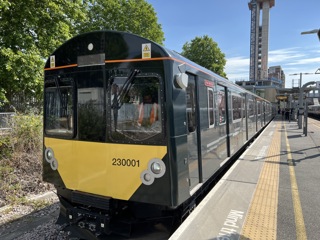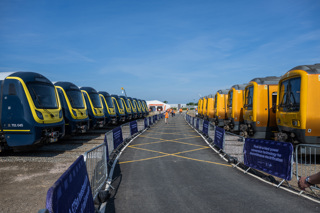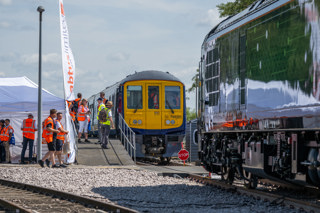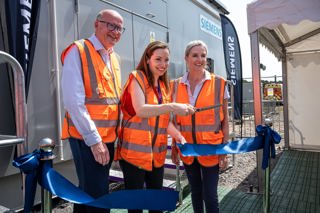This project involved detailed maintenance repairs to a mainly wrought iron Grade 2* listed arch structure with five 45 metre-long spans carrying a two-track railway over the River Thames. Built in 1863, 150 years of rail traffic in a harsh environment - and today carrying about 18 trains per hour - had taken its toll.
Network Rail awarded Kier a contract from 2013 to design and repair, strengthen and apply a protective coating system to the bridge to extend its life by 25 years. This was all pretty standard stuff, but what nobody anticipated was that the structure turned out to have some 9,000 structural elements to it. A detailed condition survey of all of the structural elements and their connections was required to accurately identify and locate any defects, plus the nature of the required repairs.
Cutting edge methods such as BIMXTRA (associated with an iPad-based BIM system which ran in real time) were implemented, identifying 2,800 defects. Of these, 1,500 required individual assessment. This detailed condition survey demonstrated that the structure was in much worse condition than anticipated. Route Availability(RA) was nearer 0 than the required minimum of 8! Kier also estimated that this method was three times faster than the traditional paper-based system.
How did it work though? A detailed 3D model was created from original drawings and surveys from 2000 to identify all the components within the bridge. Whenever a defect was found, the surveyor could ‘tag’ it on the iPad. This then generated a survey sheet which fed directly to a work sheet on site. On completing repair of the defect, the engineer produced a quality sheet to sign off the work, with all the information being stored electronically.
Thanks to this approach, it will be possible to resurvey this bridge in the future and make a direct visual comparison with 2015.
The use of these modern methods saved around 36 programme days and provided the client (Network Rail) with savings totalling £864,000. Train services continued as normal throughout the works, helped by the structure having been originally built for broad gauge standards. The works were delivered to budget and 500,000 hours of work on site were delivered RIDDOR free.
The success of the methods used on the project provide a blueprint for future repairs of this kind, providing transferrable benefits for the rest of the rail industry.
Judges’ comments
“The original objective had been to deliver RA10 at 50mph. Given the very poor condition of the structure a creditable RA8 at 50mph (freight 30mph) was delivered. Clearly there are transferable lessons to be learned from the approach and real legacy benefits.
“The contractor set out to minimise the impact of the works on local house residents, river boat residents, river users as well as rail traffic and this they achieved. This was a thoroughly pleasing and successful piece of work despite being carried out over water with significant tidal ranges.”


















Login to comment
Comments
No comments have been made yet.